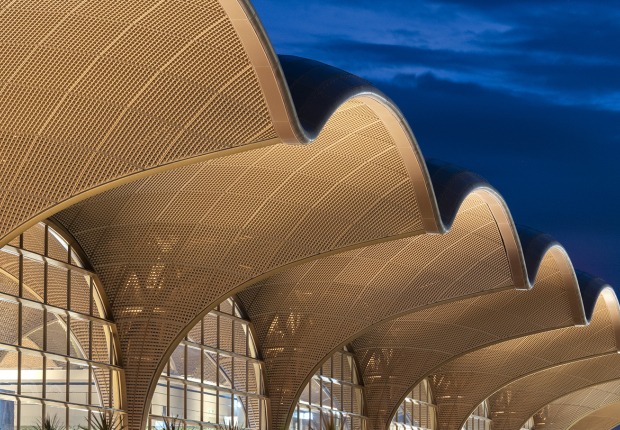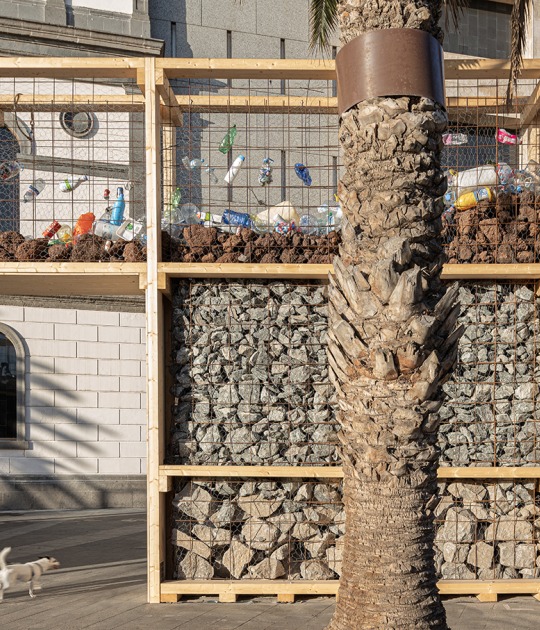The project came to OLI Architecture through Serra himself, with who the firm had previously collaborated. The artist worked closely with OLI throughout the design process for LX Pavilion, choosing the site with them and even sharing a copy of a Japanese joinery book from his library.
Description of project by OLI Architecture
On a sloping estate in Bedford, NY, the LX Pavilion stands at the intersection of minimal and cerebral, of material and space: dualities emanating from the Richard Serra sculpture within. Unlike the temporary indoor gallery installation where the London Cross (2014) was first shown, the design team was tasked to create a permanent home for Serra’s sculpture composed of two fifteen-ton weathering-steel plates measuring 40’ long, 7’ tall and 2-1/2” thick. Balanced on its edge, the lower steel plate runs diagonally between two corners of the room, while its counterpart, perched atop with a point load at midpoint and running perpendicular to it, is held in place by the specially constructed hydrated-lime wall partition resisting only the plate’s rail loads.
The lower plate defines a plane that bisects the pavilion into two galleries, bringing an immediate awareness to the presence of the unseen side. Due to the mass and finish of the weathering-steel plates, the design mandated a carefully choreographed sequential dance between professional riggers and contractors to install the plates and the interior partitions during temperate weather to address temperature and RH control prior to commissioning the remotely located MEP system connected underground. Once complete, the pavilion interior spatially, figuratively and contractually became Serra’s “art piece.” On the exterior, a charred Accoya timber rainscreen wraps the façade shrouding the north facing skylights distributing soft indirect lighting into the gallery. In contrast to the preserved dark mill-scale of the steel plates, the façade was designed to naturally patina over time.
The artist, Richard Serra, who spent half a century experimenting with unconventional, industrial materials of rubber, neon and lead before his large-scale installations in steel, considers space to be his “primary material.” In some sense, it was scale and the reduction of his art to the most elemental of materials and form that gave rise to his prominence. His art gives intimate access to the emotional and existential appeal of time, timelessness and body.
In the same ethos, the LX Pavilion was designed not only as a container of Serra’s London Cross (2014) but an integral component of the artistic experience. From the careful siting of the pavilion twenty degrees east of True-North minimizing any untoward shadows through the carefully sculpted sawtooth skylight, to the charred wood rainscreen veiling in anticipating the spatial/temporal tension within, to the specially hydrated-lime walls eliminating construction joints while resisting the movement and rail load of the plates; the pavilion is complex with deceivingly simple results.
Unlike many of Serra’s outdoor sculptures that measure time through slow material transformation, the charred Accoya rainscreen transforms with time while protecting the weathering-steel plates within. Conversely the gallery interior delineates time and space through the precariously balanced latent tension, marking its temporality in anticipation of the piece’s eventual demise, providing the visitor a quiet sanctuary where time and space merge.












































